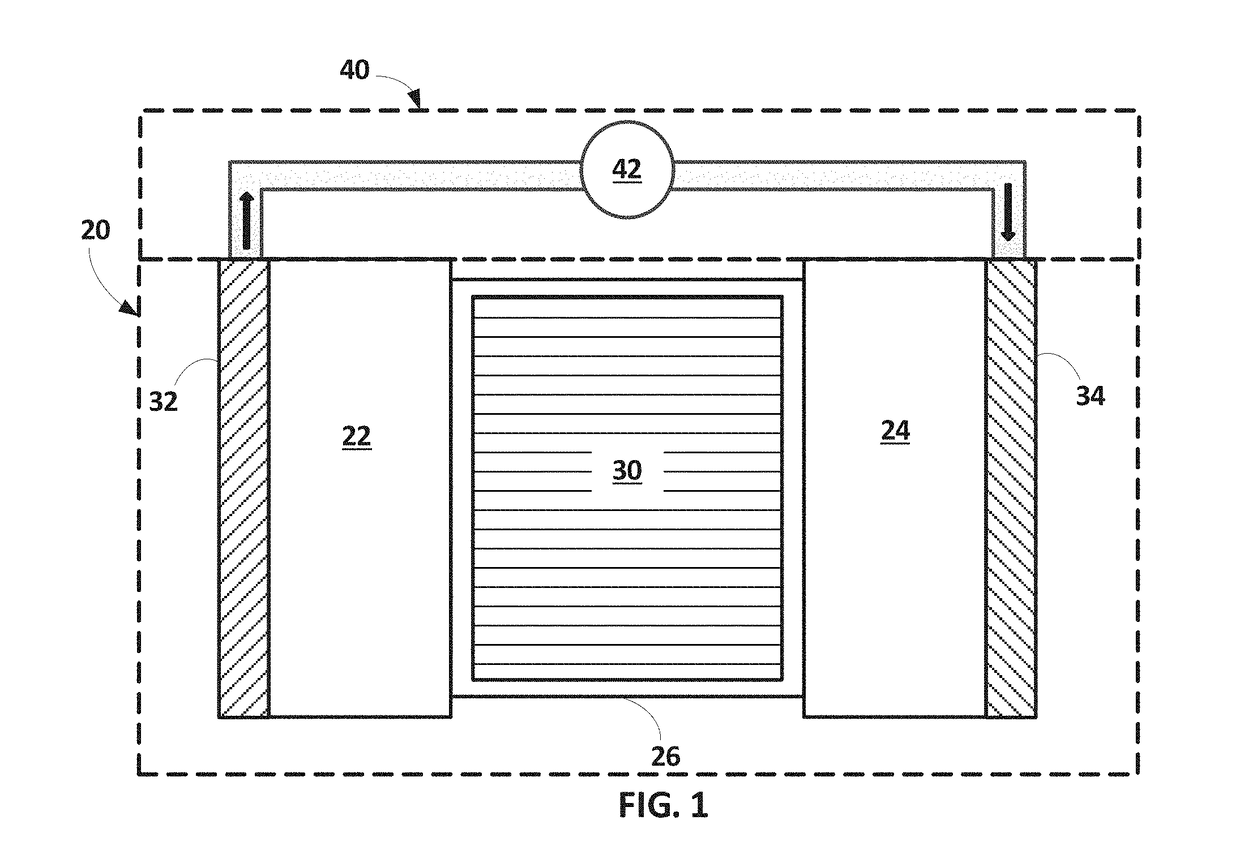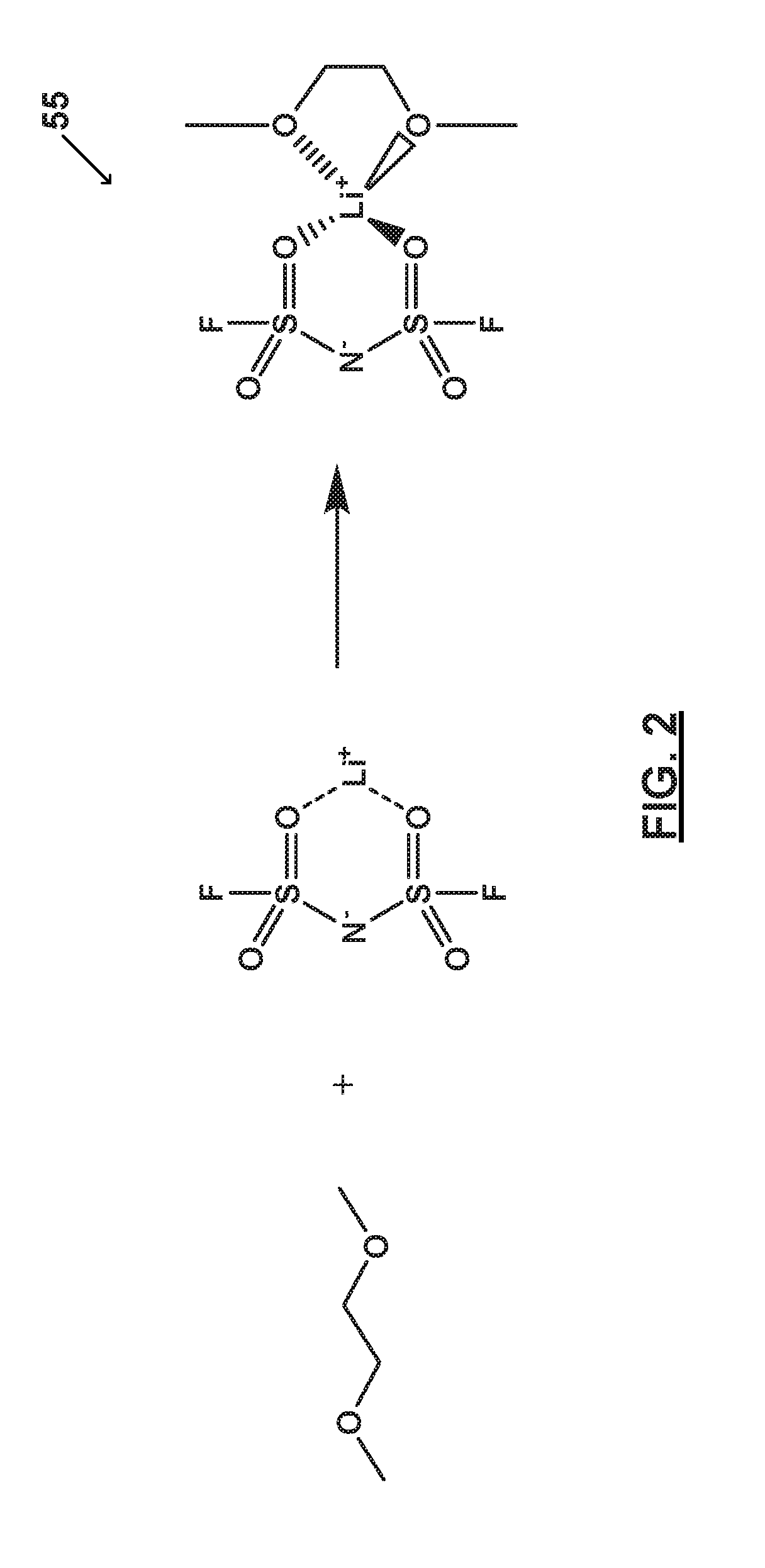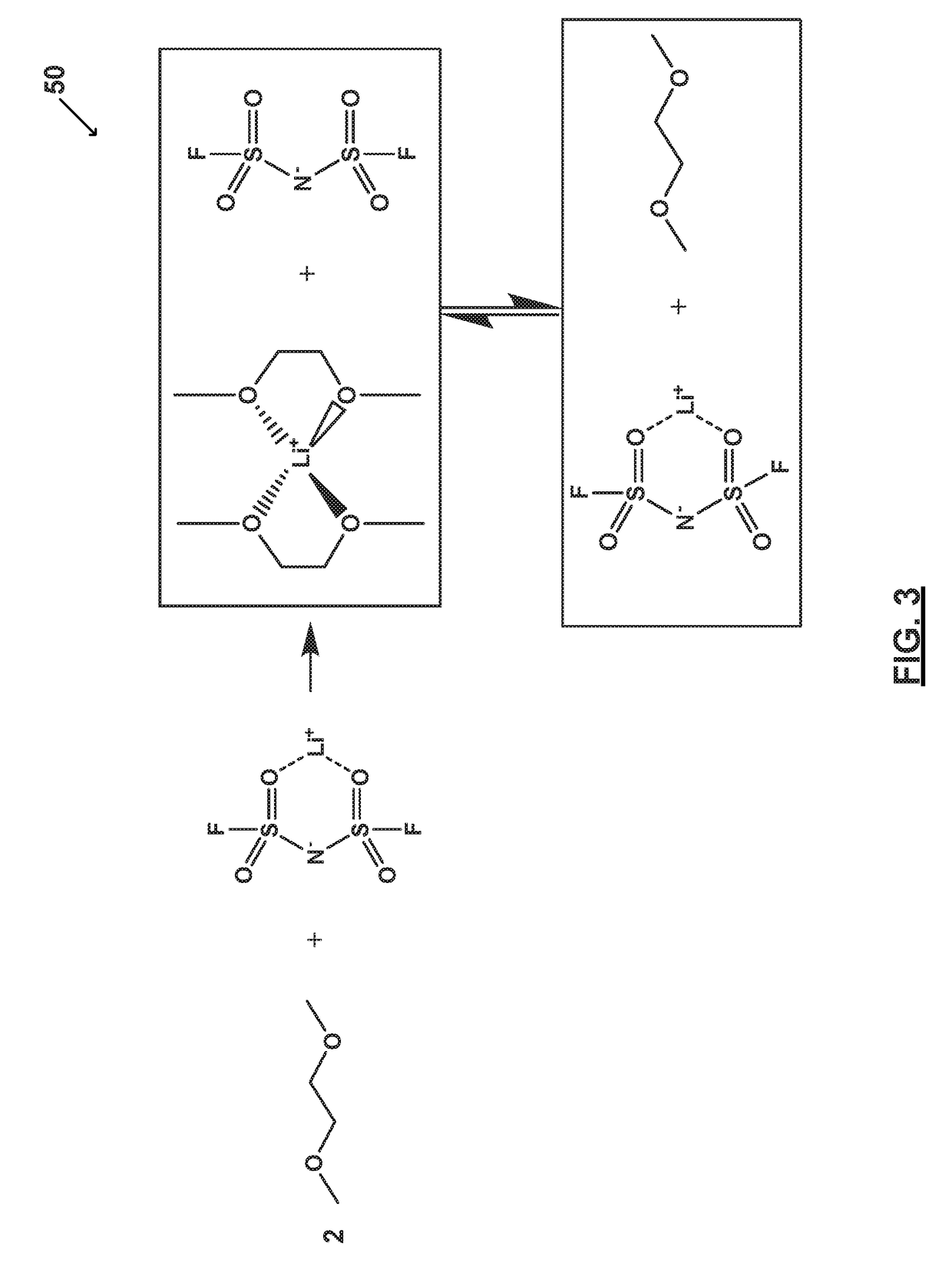Ether-based electrolyte system improving or supporting anodic stability of electrochemical cells having lithium-containing anodes
a lithium-containing anode, ether-based electrolyte technology, applied in the manufacture of final products, electrochemical generators, batteries, etc., can solve the problems of reducing the cycle reducing the coulombic efficiency and cycling life of rechargeable lithium batteries, and lithium metal batteries also have potential downsides. , to achieve the effect of improving cycling performance, improving long-term performance, and fast capacity drop
- Summary
- Abstract
- Description
- Claims
- Application Information
AI Technical Summary
Benefits of technology
Problems solved by technology
Method used
Image
Examples
example 1
[0067]FIG. 2 illustrates an electrolyte system 55 prepared in accordance with certain aspects of the present disclosure. In particular, FIG. 2 shows an electrolyte system 55 comprising one or more salts bound to a solvent to form a bound moiety. Electrolyte system 55 includes a bound moiety comprising lithium bis(fluorosulfonyl)imide (LiFSI) and dimethoxyethane (DME). Electrolyte system 55 includes a concentration of lithium bis(fluorosulfonyl)imide (LiFSI) of about 5M and a molar ratio of the lithium bis(fluorosulfonyl)imide (LiFSI) to the dimethoxyethane (DME) of greater than or equal to about 1 to less than or equal to about 1.5.
[0068]As illustrated, substantially all of the dimethoxyethane (DME) molecules bind with lithium (Li+). Thus, dimethoxyethane (DME) and bis(fluorosulfonyl)imide (FSI−) may be immobilized and the electrolyte system 55 substantially free of free or unbound dimethoxyethane (DME) and free or unbound bis(fluorosulfonyl)imide (FSI−). Electrolyte system 55 compr...
example 2
[0072]FIG. 5 shows the charging and discharging profiles (e.g., cycle life) of comparative high-capacity 20 μm Li-NMC 622 electrochemical cells 100, 200, and 300 including negative electrodes comprising metallic lithium and varying electrolyte systems comprising lithium bis(fluorosulfonyl)imide (LiFSI) and dimethoxyethane (DME). The y-axis or vertical-axis 80 depicts the capacity retention in milliamp hour (mAh), while the cycle number is shown on the x-axis 90. Electrochemical cell 100 includes an electrolyte system prepared in accordance with certain aspects of the present disclosure. In particular, the electrolyte system of electrochemical cell 100 includes a bound moiety and has a lithium bis(fluorosulfonyl)imide (LiFSI) salt concentration of about 5M and a molar ratio the lithium bis(fluorosulfonyl)imide (LiFSI) to the dimethoxyethane (DME) of about 1. The electrolyte system of electrochemical cell 200 has a lithium bis(fluorosulfonyl)imide (LiFSI) salt concentration of about 4...
PUM
 Login to View More
Login to View More Abstract
Description
Claims
Application Information
 Login to View More
Login to View More - R&D
- Intellectual Property
- Life Sciences
- Materials
- Tech Scout
- Unparalleled Data Quality
- Higher Quality Content
- 60% Fewer Hallucinations
Browse by: Latest US Patents, China's latest patents, Technical Efficacy Thesaurus, Application Domain, Technology Topic, Popular Technical Reports.
© 2025 PatSnap. All rights reserved.Legal|Privacy policy|Modern Slavery Act Transparency Statement|Sitemap|About US| Contact US: help@patsnap.com



